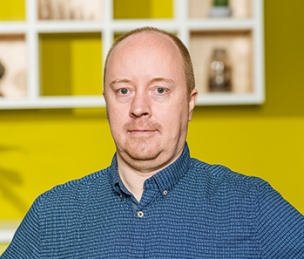Displaying 1 - 8 of 8
-
Drude, S., Trilsbeek, P., Sloetjes, H., & Broeder, D. (2014). Best practices in the creation, archiving and dissemination of speech corpora at the Language Archive. In S. Ruhi, M. Haugh, T. Schmidt, & K. Wörner (
Eds. ), Best Practices for Spoken Corpora in Linguistic Research (pp. 183-207). Newcastle upon Tyne: Cambridge Scholars Publishing. -
Jung, D., Klessa, K., Duray, Z., Oszkó, B., Sipos, M., Szeverényi, S., Várnai, Z., Trilsbeek, P., & Váradi, T. (2014). Languagesindanger.eu - Including multimedia language resources to disseminate knowledge and create educational material on less-resourced languages. In N. Calzolari, K. Choukri, T. Declerck, H. Loftsson, B. Maegaard, J. Mariani, A. Moreno, J. Odijk, & S. Piperidis (
Eds. ), Proceedings of LREC 2014: 9th International Conference on Language Resources and Evaluation (pp. 530-535).Abstract
The present paper describes the development of the languagesindanger.eu interactive website as an example of including multimedia language resources to disseminate knowledge and create educational material on less-resourced languages. The website is a product of INNET (Innovative networking in infrastructure for endangered languages), European FP7 project. Its main functions can be summarized as related to the three following areas: (1) raising students' awareness of language endangerment and arouse their interest in linguistic diversity, language maintenance and language documentation; (2) informing both students and teachers about these topics and show ways how they can enlarge their knowledge further with a special emphasis on information about language archives; (3) helping teachers include these topics into their classes. The website has been localized into five language versions with the intention to be accessible to both scientific and non-scientific communities such as (primarily) secondary school teachers and students, beginning university students of linguistics, journalists, the interested public, and also members of speech communities who speak minority languages -
Klatter-Folmer, J., Van Hout, R., Van den Heuvel, H., Fikkert, P., Baker, A., De Jong, J., Wijnen, F., Sanders, E., & Trilsbeek, P. (2014). Vulnerability in acquisition, language impairments in Dutch: Creating a VALID data archive. In N. Calzolari, K. Choukri, T. Declerck, H. Loftsson, B. Maegaard, J. Mariani, A. Moreno, J. Odijk, & S. Piperidis (
Eds. ), Proceedings of LREC 2014: 9th International Conference on Language Resources and Evaluation (pp. 357-364).Abstract
The VALID Data Archive is an open multimedia data archive (under construction) with data from speakers suffering from language impairments. We report on a pilot project in the CLARIN-NL framework in which five data resources were curated. For all data sets concerned, written informed consent from the participants or their caretakers has been obtained. All materials were anonymized. The audio files were converted into wav (linear PCM) files and the transcriptions into CHAT or ELAN format. Research data that consisted of test, SPSS and Excel files were documented and converted into CSV files. All data sets obtained appropriate CMDI metadata files. A new CMDI metadata profile for this type of data resources was established and care was taken that ISOcat metadata categories were used to optimize interoperability. After curation all data are deposited at the Max Planck Institute for Psycholinguistics Nijmegen where persistent identifiers are linked to all resources. The content of the transcriptions in CHAT and plain text format can be searched with the TROVA search engine -
Trilsbeek, P., & Koenig, A. (2014). Increasing the future usage of endangered language archives. In D. Nathan, & P. Austin (
Eds. ), Language Documentation and Description vol 12 (pp. 151-163). London: SOAS. Retrieved from http://www.elpublishing.org/PID/142. -
Wittenburg, P., Trilsbeek, P., & Wittenburg, F. (2014). Corpus archiving and dissemination. In J. Durand, U. Gut, & G. Kristoffersen (
Eds. ), The Oxford Handbook of Corpus Phonology (pp. 133-149). Oxford: Oxford University Press. -
Wittenburg, P., & Trilsbeek, P. (2010). Digital archiving - a necessity in documentary linguistics. In G. Senft (
Ed. ), Endangered Austronesian and Australian Aboriginal languages: Essays on language documentation, archiving and revitalization (pp. 111-136). Canberra: Pacific Linguistics. -
Wittenburg, P., Trilsbeek, P., & Lenkiewicz, P. (2010). Large multimedia archive for world languages. In SSCS'10 - Proceedings of the 2010 ACM Workshop on Searching Spontaneous Conversational Speech, Co-located with ACM Multimedia 2010 (pp. 53-56). New York: Association for Computing Machinery, Inc. (ACM). doi:10.1145/1878101.1878113.
Abstract
In this paper, we describe the core pillars of a large archive oflanguage material recorded worldwide partly about languages that are highly endangered. The bases for the documentation of these languages are audio/video recordings which are then annotated at several linguistic layers. The digital age completely changed the requirements of long-term preservation and it is discussed how the archive met these new challenges. An extensive solution for data replication has been worked out to guarantee bit-stream preservation. Due to an immediate conversion of the incoming data to standards -based formats and checks at upload time lifecycle management of all 50 Terabyte of data is widely simplified. A suitable metadata framework not only allowing users to describe and discover resources, but also allowing them to organize their resources is enabling the management of this amount of resources very efficiently. Finally, it is the Language Archiving Technology software suite which allows users to create, manipulate, access and enrich all archived resources given that they have access permissions. -
Trilsbeek, P., & Wittenburg, P. (2005). Archiving challenges. In J. Gippert, N. Himmelmann, & U. Mosel (
Eds. ), Essentials of language documentation (pp. 311-335). Berlin: Mouton de Gruyter.

Share this page